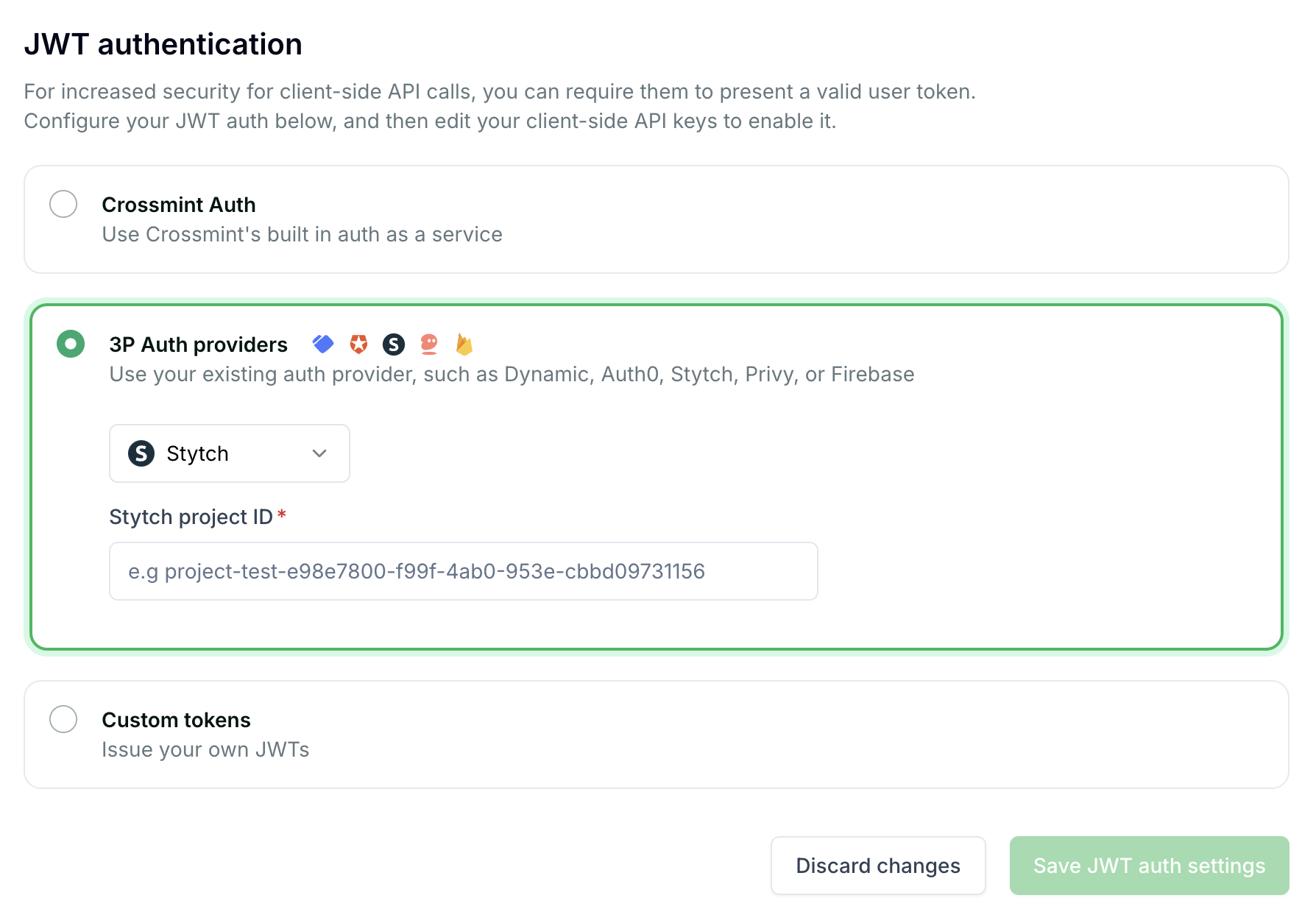owner property.
Prerequisites
- API Key: Ensure you have an API key with the scopes:
wallets.create.
Using your own auth provider
- React
- React Native
1
Configure JWT Authentication in the Crossmint Console
- Navigate to your project in the Crossmint Console.
- Go to the API Keys section from the sidebar.
- Scroll down to the JWT authentication section.
- Choose your preferred authentication method:
- 3P Auth providers: Select from supported providers such as Dynamic, Auth0, Stytch, Privy, Firebase, Kinde, or Supabase. Enter any required environment IDs or configuration details.
- Custom tokens: Opt to issue and manage your own JWTs.
- After making your selection and providing any necessary details, click Save JWT auth settings to apply your configuration.

2
Add the Crossmint providers to your app
Add the necessary Crossmint providers to your app together with your own auth provider.
With the current setup, a wallet will be created automatically on login.
Configuring the Wallet Provider
A set of callbacks to be called when the wallet is created or a transaction is initiated.
Only applies if you are using a passkey as the signer.If true, modals explaining what passkeys are will be shown to the user when creating a wallet and signing a transaction, for a better user experience.
Styles to configure the appearance of the wallet authorization modals.
3
Passthrough the jwt information to the Crossmint provider
Create the wallet on login once the jwt and the email are available.

